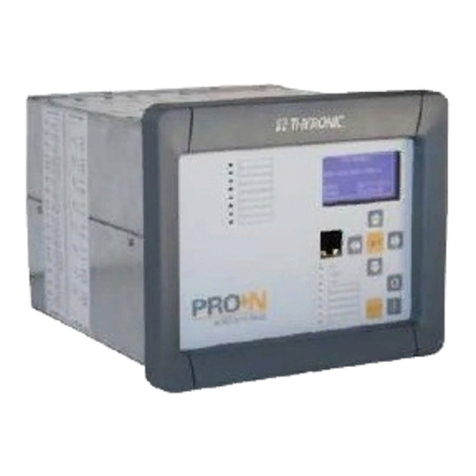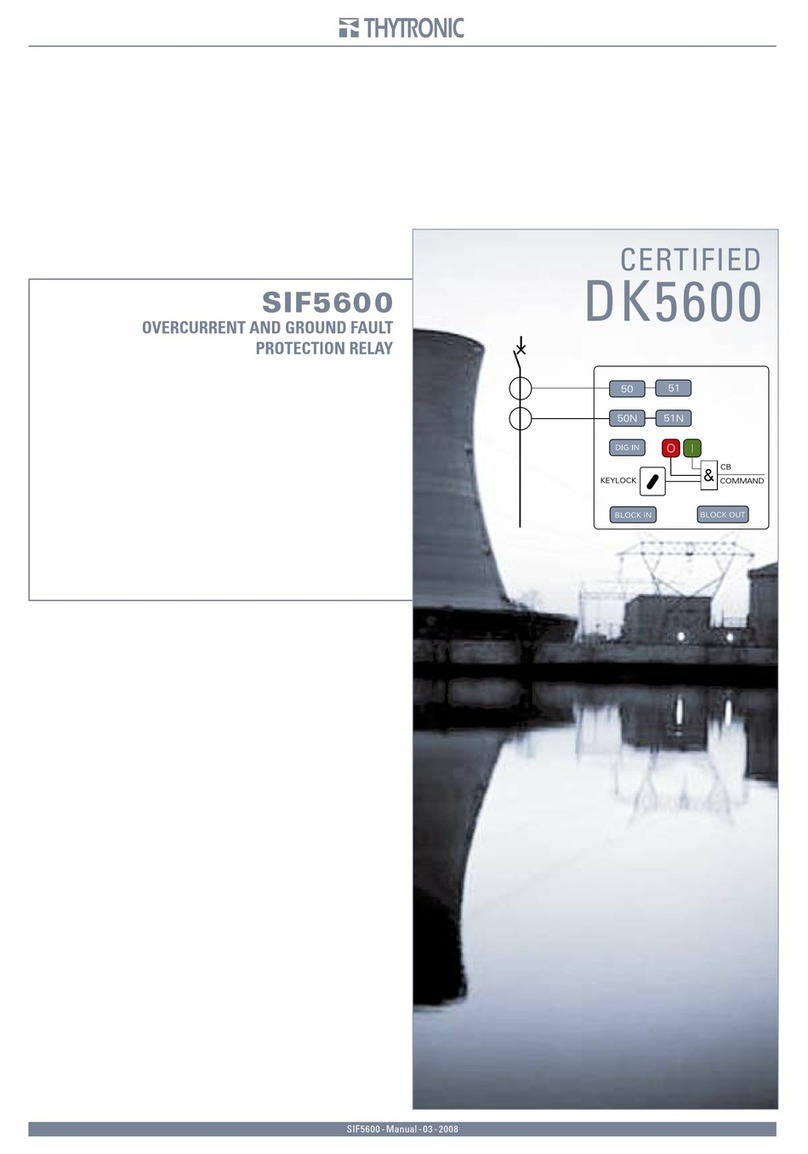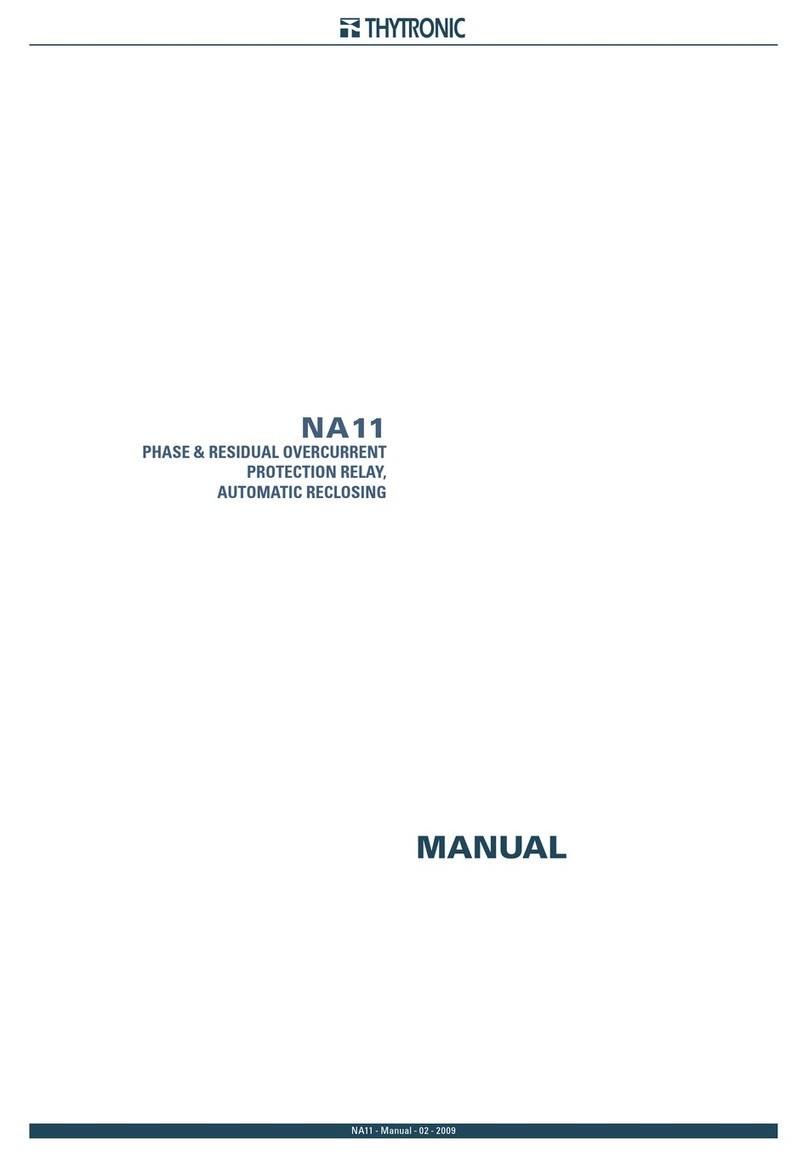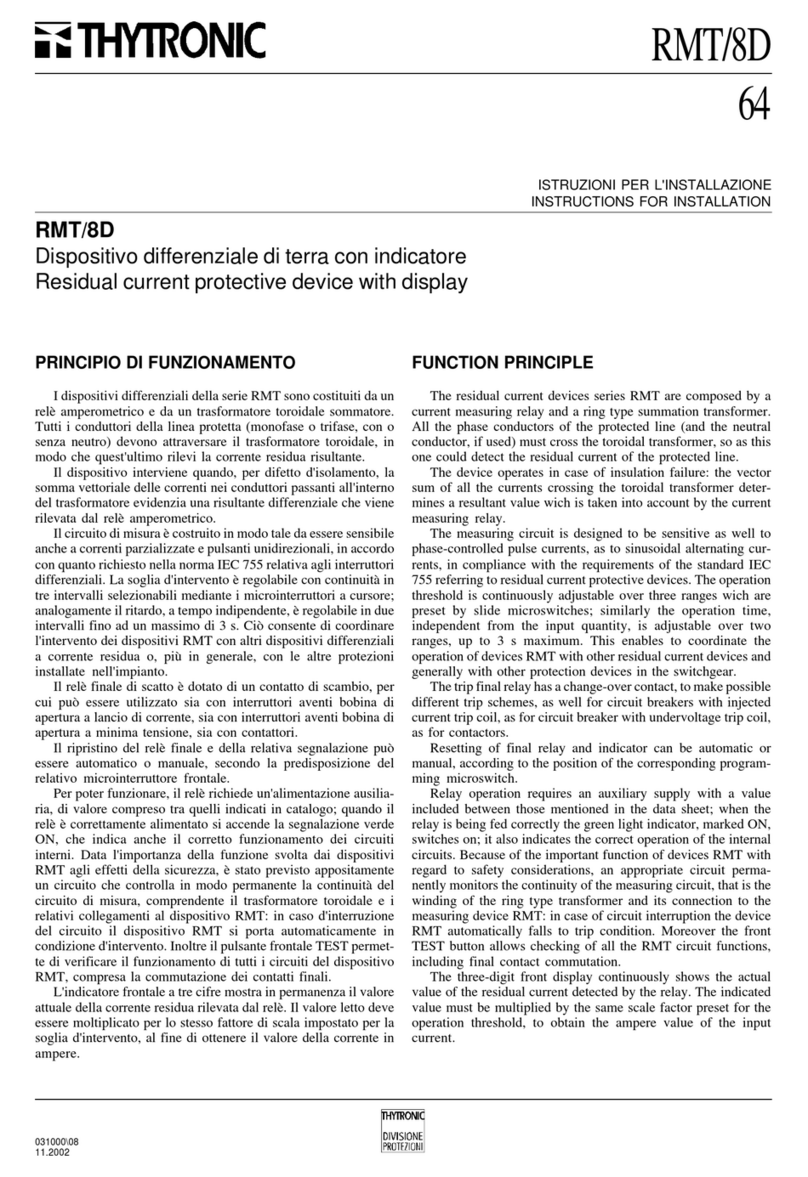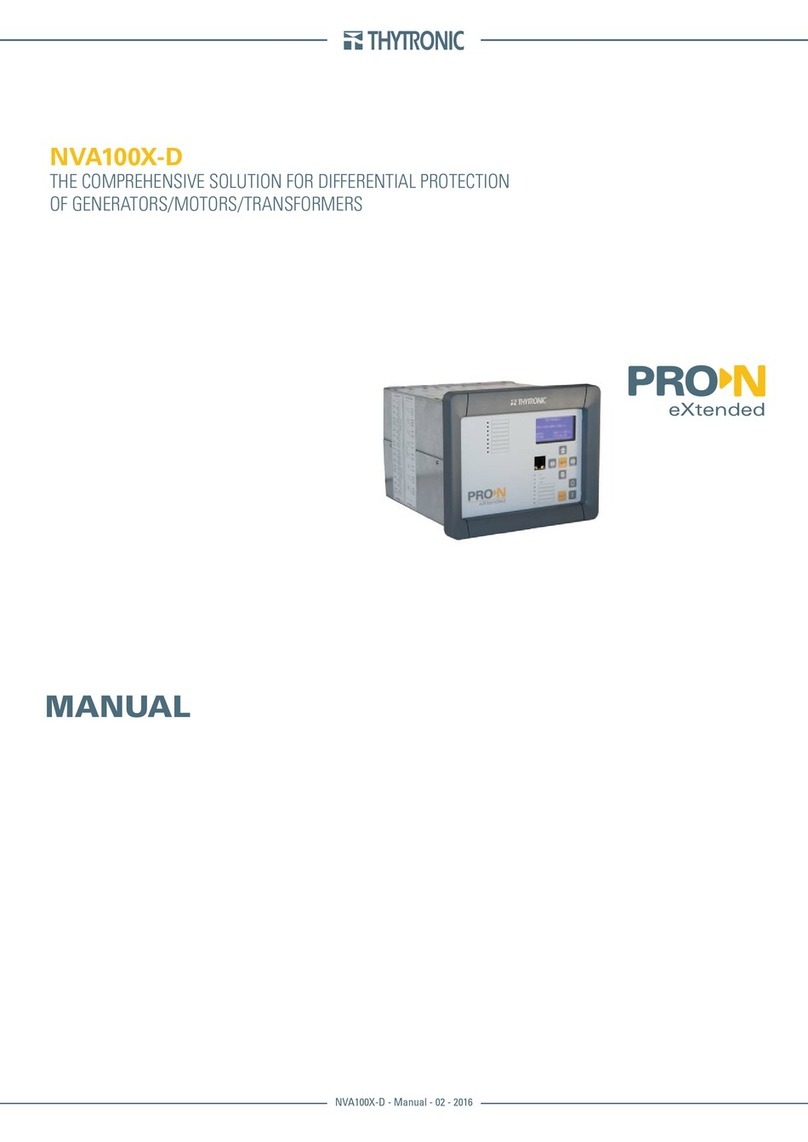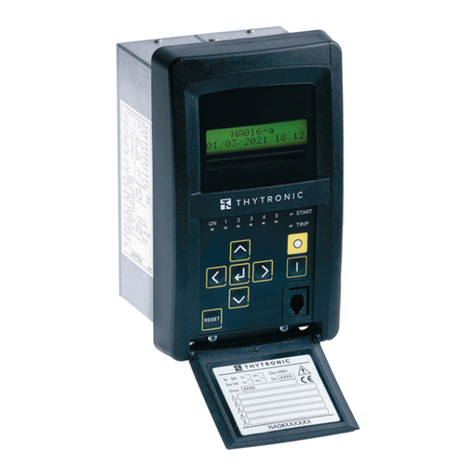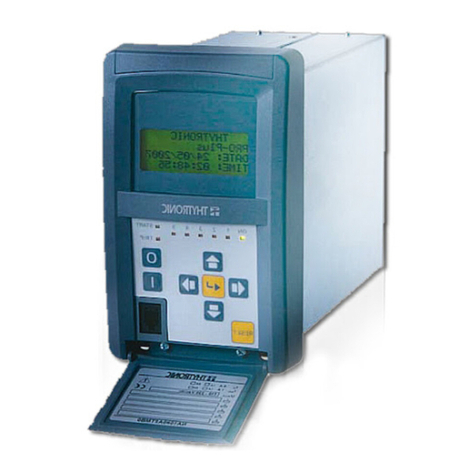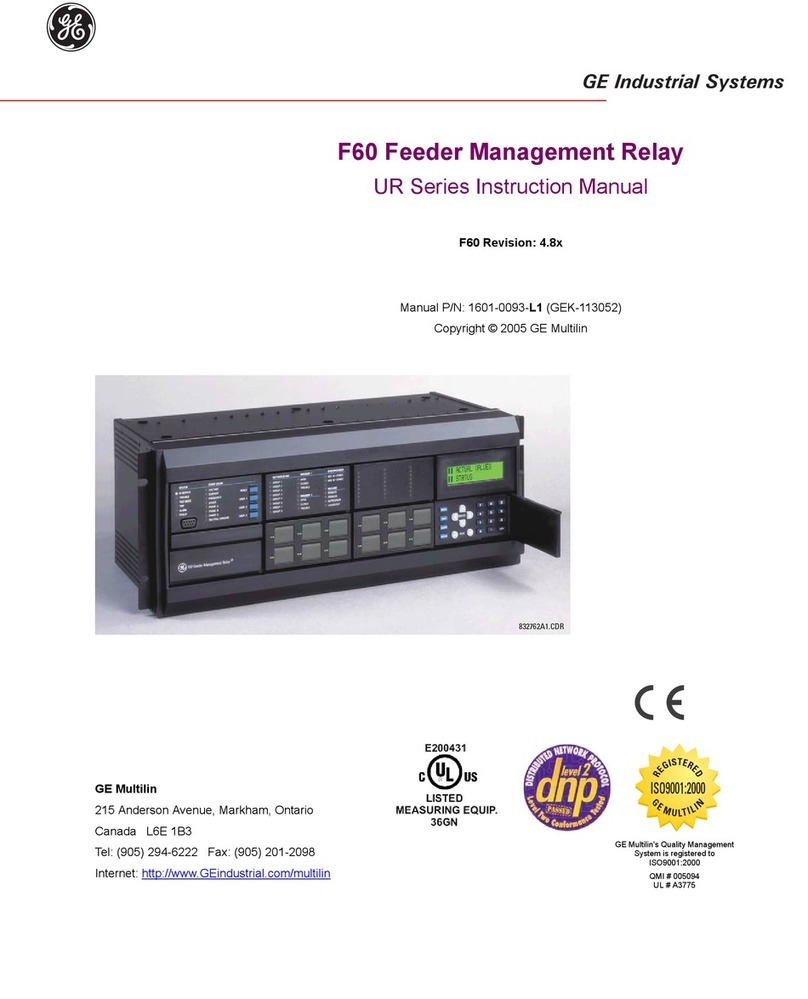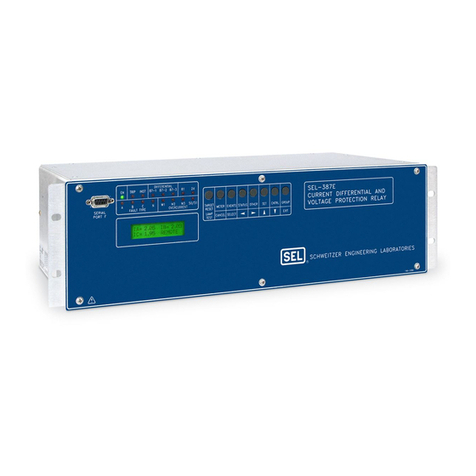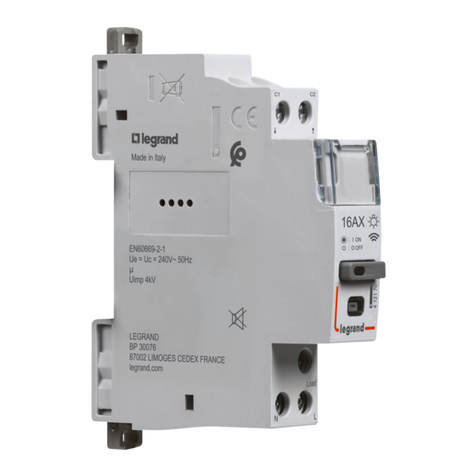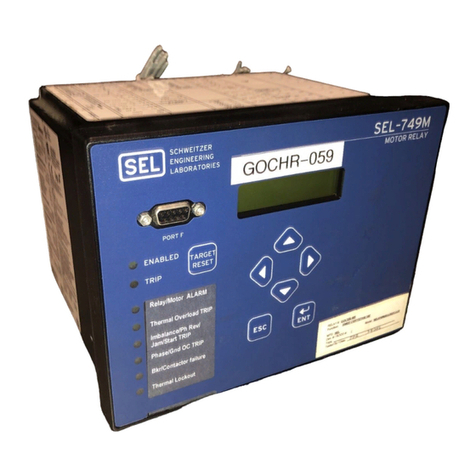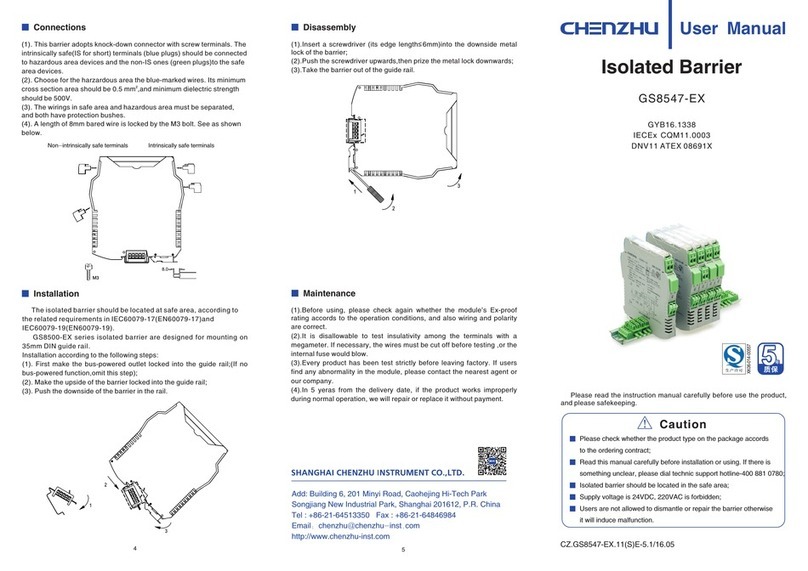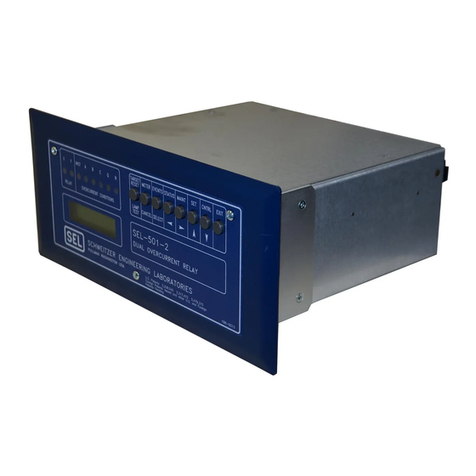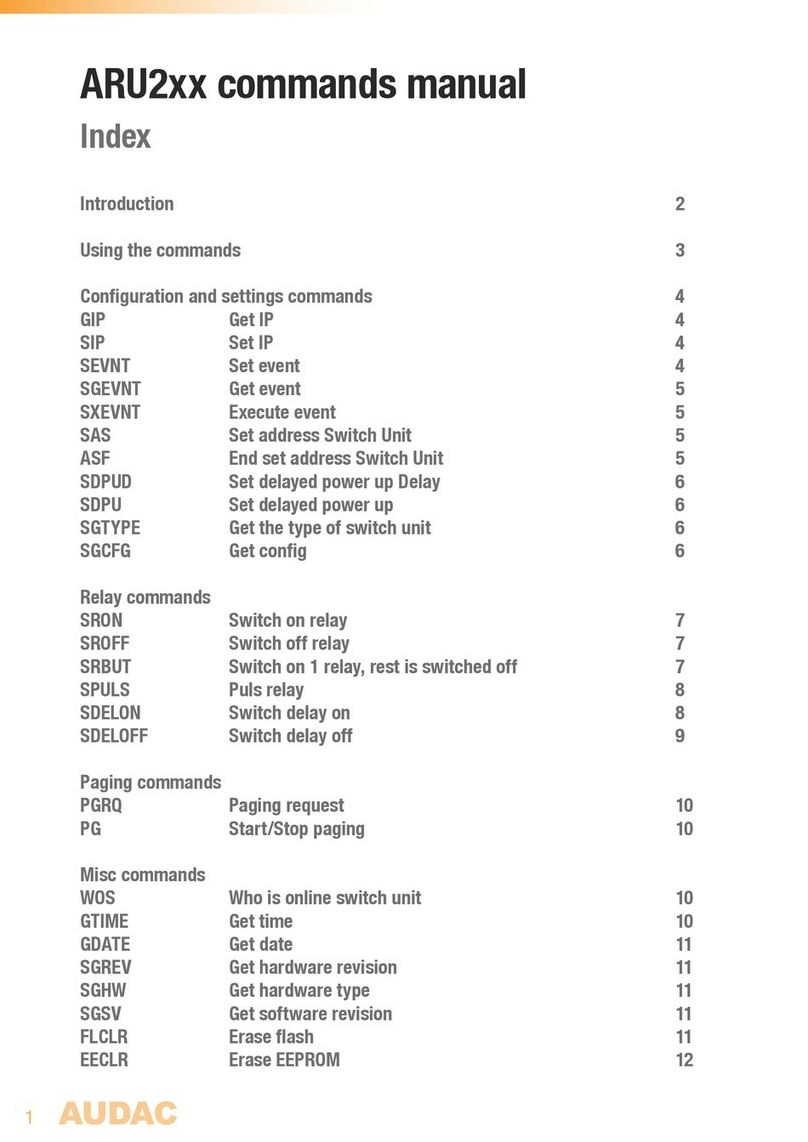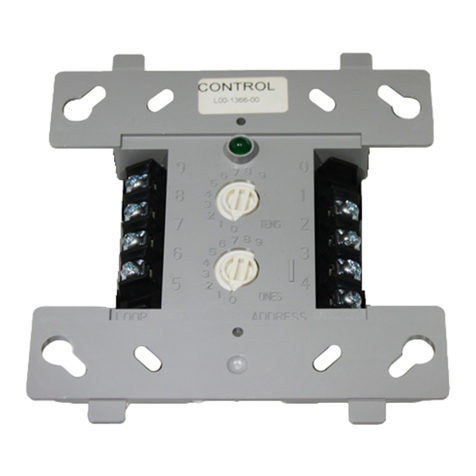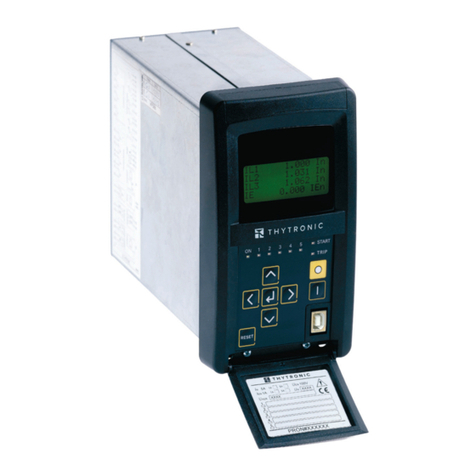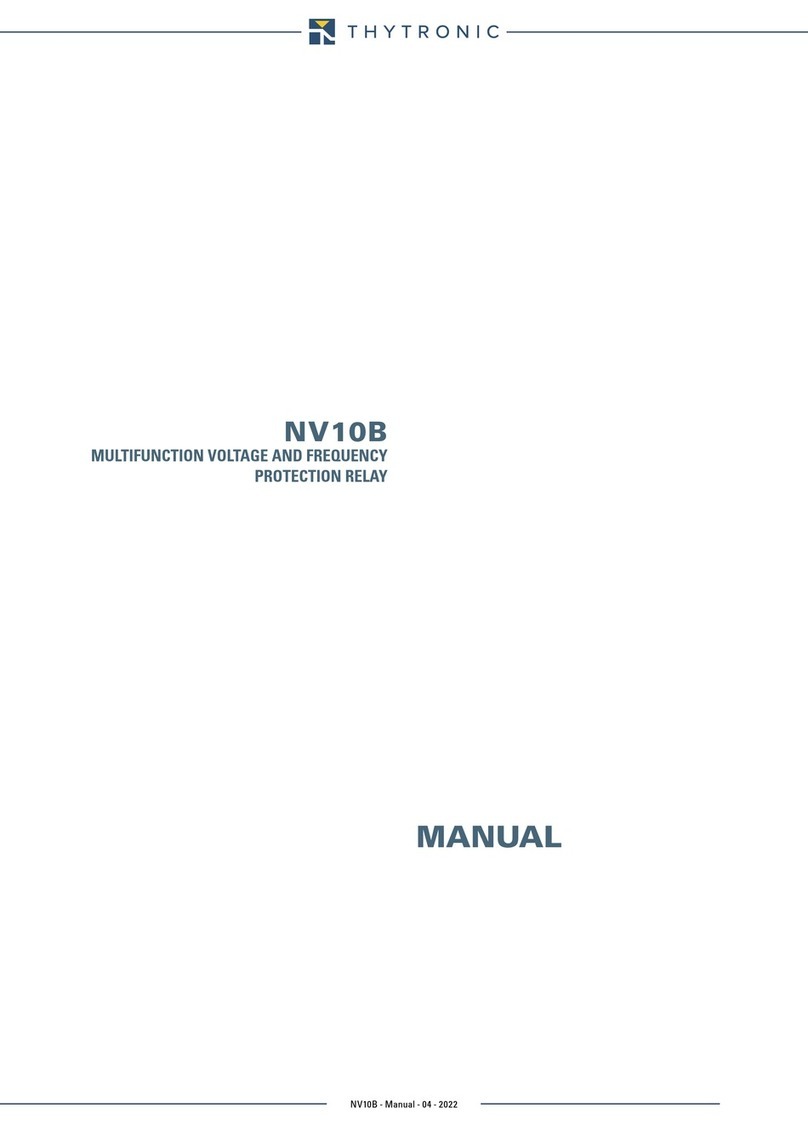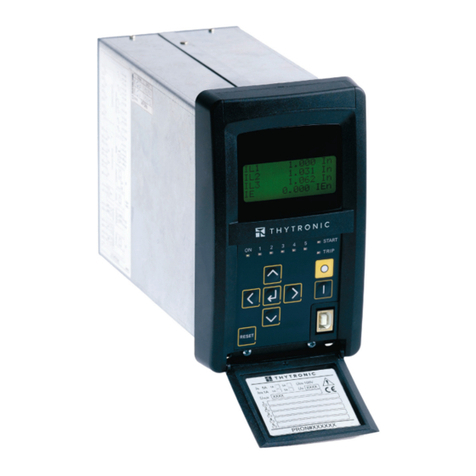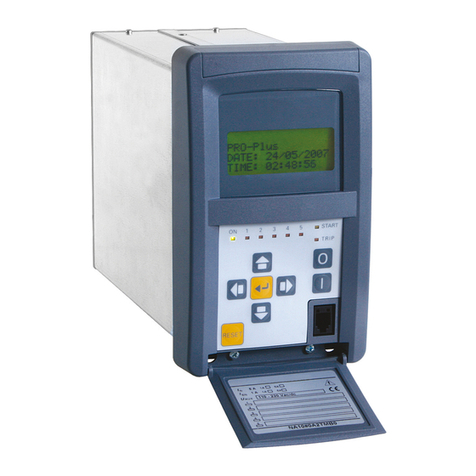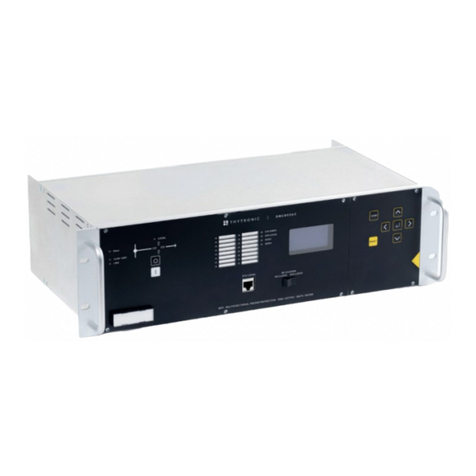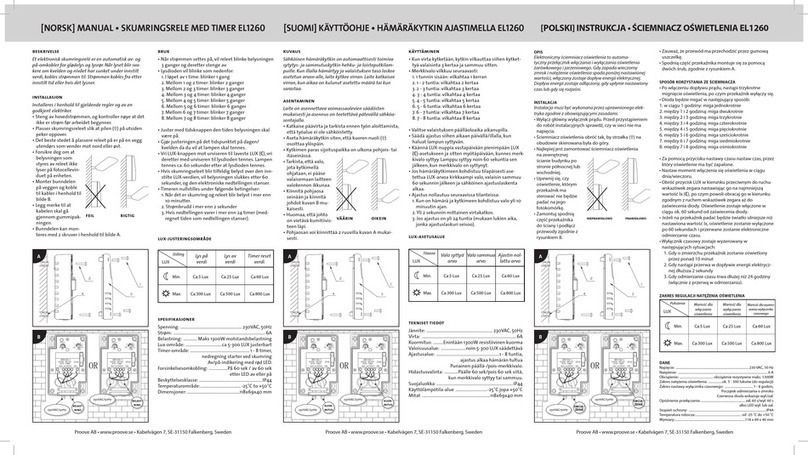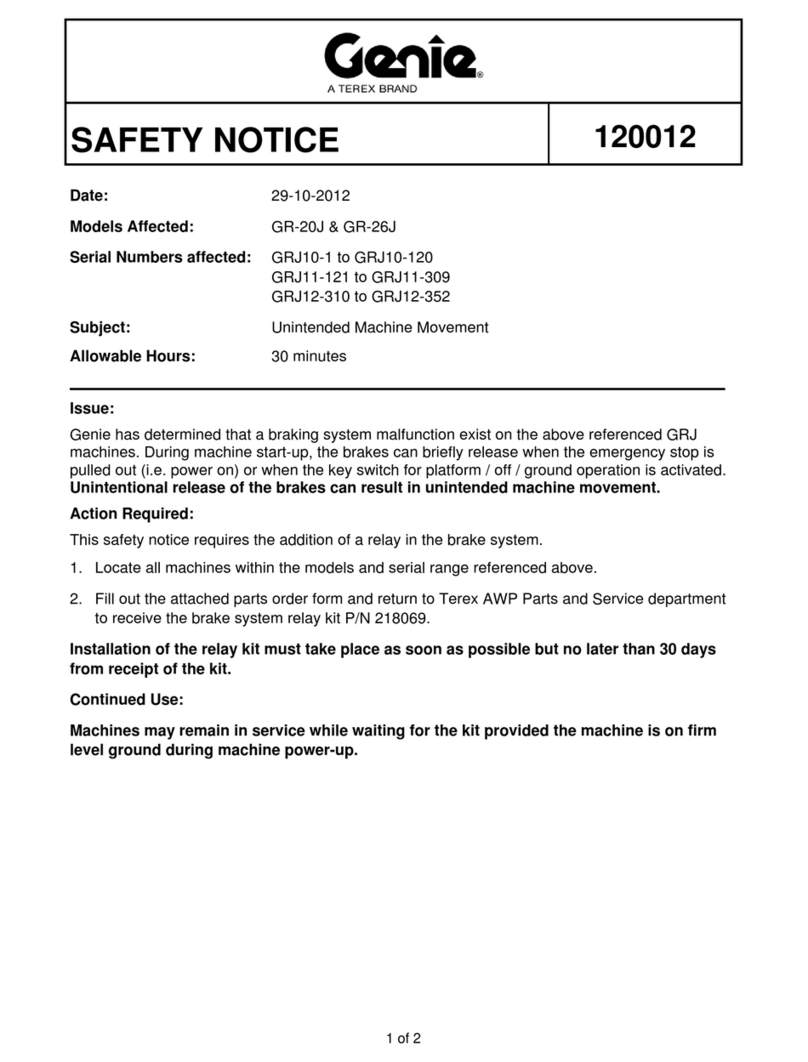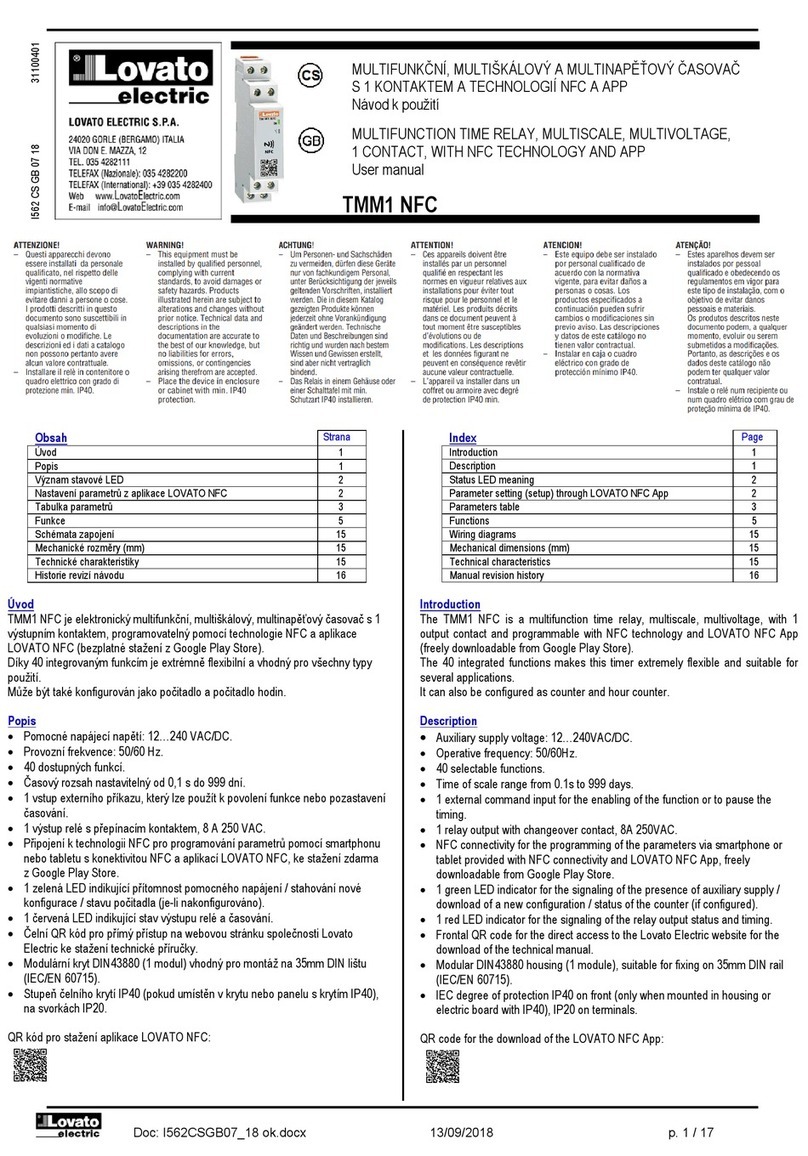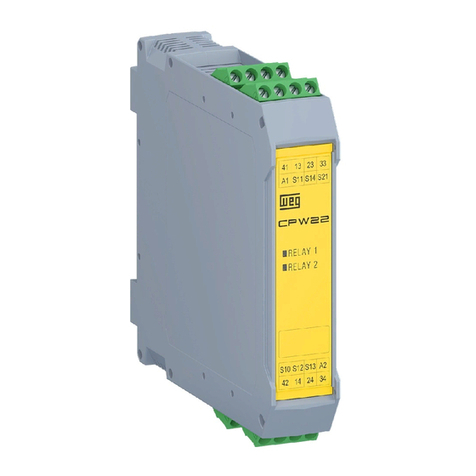
33
33
3
RMT3\08
09-2000
RMT/3
TRASFORMATORE TOROIDALE SOMMATORE
Iltrasformatoretoroidaledeveesserecollegatocomespecificatoa
latorelativamentealcircuitoamperometrico. Deve essere attraver-
sato nel medesimo senso da tutti i
conduttoriattividellalinea,compreso
ilneutro(qualorasiadistribuito).Que-
st'ultimo non deve essere collegato a
terra a valle del toroide. Il cavo o i
singoli conduttori, devono essere po-
sizionatiinmodosimmetricorispetto
all'asse centrale del trasformatore
toroidale.
Nel caso in cui la linea protetta
abbia un'armatura metallica, questa
deveesserecollegataaterraavalledel
toroide;pertanto se il toroide è instal-
latoavalledelmanicottoterminaledel
cavoarmato,ilrelativocollegamentoa
terradeveattraversareiltoroide(altri-
mentinellacondizionediguastod'iso-
lamento del cavo verso l'armatura esterna, la corrente di terra
annullerebbelacorrente differenziale ed ilrelèamperometriconon
potrebbeoperare);inoltreilmanicottoterminaledeveessereisolato
dal telaio di supporto, in modo che la corrente di terra circoli
solamente nel collegamento di terra che attraversa il toroide.
Se il toroide è posto a monte del manicotto terminale del cavo
armato,percui esso èattraversatounicamentedai conduttori attivi,
il collegamento di protezione a terra del manicotto non deve attra-
versare il trasformatore toroidale.
Effettuando un collegamento permanente ai morsetti 11-12,
oppure posizionando su Aut. il microinterruttore frontale contras-
segnatoRESET,siottieneilripristinoautomatico,acondizioneche
la corrente residua rilevata sia scesa sotto il 90% della soglia
d'intervento.
By making a solid connection between terminals 11-12, or by
settingtoAut.thefrontplatemicroswitchreferredtoasRESET,the
function of automatic reset is performed, upon condition that the
residual current detected by the device drops below 90% of the
operation threshold.
CIRCUITO UTILIZZATORE DI SCATTO
Il circuito utilizzatore di scatto è costituito da due contatti di
scambiodisponibili ai morsetti 15-16-17 e 19-20-21.In condizioni
normali,cioèconunacorrentediterrainferioreallasogliad'interven-
to,icontattifinalidiscambiosonochiusitraiterminali16-17e19-
20. All'intervento del dispositivo i
contatti finali si chiudono tra i ter-
minali15-16e20-21eilLEDrosso
disegnalazionesiaccende.Lostato
del relè può essere predisposto
comenormalmente diseccitatoN.D.
o normalmente eccitato N.E. me-
diante il relativo microinterruttore
frontale; il dispositivo RMT/3 può
quindifunzionareasicurezzaposi-
tiva,nellaqualeilrelèfinaleèman-
tenuto eccitato in condizione nor-
male e si diseccita in caso d'inter-
vento. Pertanto in condizioni nor-
malii contattifinalisonochiusitra imorsetti15-16e20-21, mentre
all'interventooalmancaredellatensioneausiliariaoincasodiguasto
deldispositivosichiudonotraimorsetti16-17e19-20.Questomodo
di funzionamento è particolarmente indicato in associazione con
interruttori aventi il comando di apertura del tipo a mancanza di
tensione.Intalcasoèopportunochelatensioneausiliariasiainc.c.,
per evitare aperture indesiderate dell'interruttore conseguenti ad
eventuali interruzioni della tensione di rete.
TRIP USER CIRCUIT
The trip user circuit comprises two change-over contacts con-
nected to terminals 15-16-17 and 19-20-21. In normal conditions,
that is with a residual current lower than the operation threshold,
thefinalcontactsisclosedbetweenterminals16-17and19-20.Upon
operation of the relay, the final
contactscloses between terminals
15-16 and 20-21 and the red LED
indicator turns on. Final relay can
beselectasnormallyde-energized
N.D. or normally energized N.E.
by means a relative microswitch;
device RMT/3 can be therefore
operate in a positive safety mode,
inwichthefinalrelayiskeptener-
gized in normal condition and is
deenergized in case of operation.
Therefore the final contacts is
closed between terminals 15-16
and20-21innormal condition,and closesbetweenterminals16-17
and19-20incase of operation or loss ofauxiliaryvoltageorfailure
of the device. This operation mode is strongly suggested when a
circuitbreakerisusedwhichhasanopeningdeviceoflossofvoltage
type. In such a circumstance the auxiliary voltage should be a d.c.
type, to make the circuit breaker not to open upon a possible mains
voltage interruption.
RING TYPE SUMMATION TRANSFORMER
The ring type transformer must be connected on side indicated
for the current circuit. It must be crossed in the same way by all the
liveconductorsoftheline,including
the neutral (whenever distributed).
This one must not be connected to
earth downstream the transformer.
The cable or the single conductors
mustbeplacedinsymmetricalfashion
with respect to the axis of the ring
transformer.
In case the protected line be an
armored cable, the armor must be
connected to earth downstream the
ring type transformer; therefore if
the transformer is installed
downstreamtheglandofthearmored
cable,itsearthconnectionmustpass
through the transformer (otherwise
in the event of insulation failure of
thecabletowardtheouterarmour,theearthcurrentwouldcancelout
the residual current and the measuring relay could not operate);
moreover the gland must be insulated from its supporting frame, in
order to make the earth current to flow in the earth connection
crossing the transformer.
Ifthetransformerisinstalledupstreamthearmouredcablegland,
it is passed through only by the live conductor, then the earthing
conductor of the gland should not pass through the transformer.






